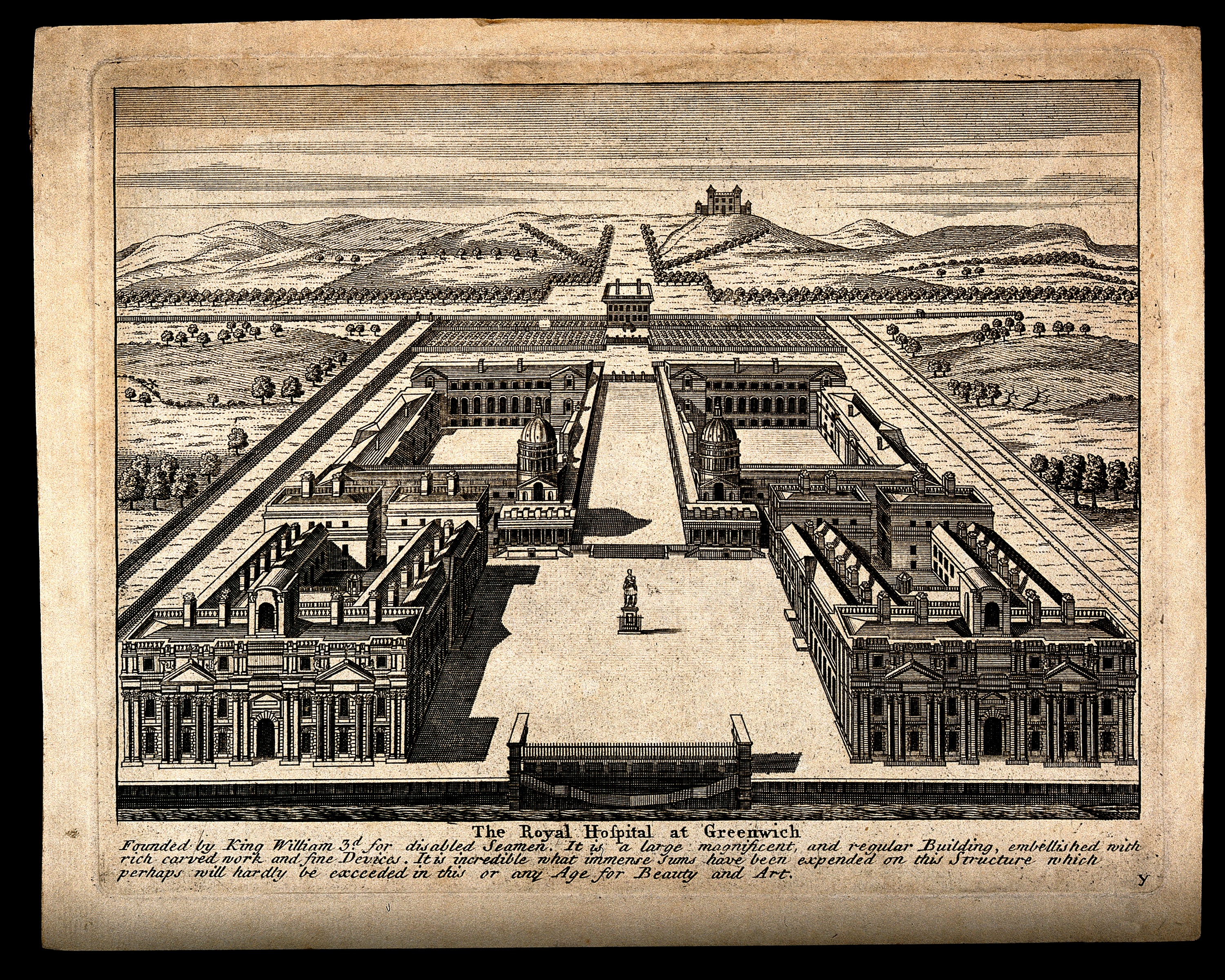The Lead Statue of George II,
Golden Square, Soho. London.
by John van Nost II.
Re erected in Golden Square in 1753.
Made originally for Canons House, for the Duke of Chandos in 1720.
_________________________________
The Marble Statue of George II
Michael Rysbrack
1735
Greenwich.
The statue is marble 220cms tall, the pedestal is of Portland Stone 220 cms tall.
For an entry in my parallel blog with further information and photographs of the portrait sculpture of George II see -
Governor Admiral Sir John Jennings,
Prefect of the Hospital, agreed to pay for a statue, if governing body provided
marble, to attract patrons for the ailing Naval Hospital. A block for a statue
of Louis XIV was siezed from a French ship and purchased by the Hospital with
the intention of executing statues of William and Mary according to Wren's
plans for the River Gate.
The statue was placed in the Great Court on 1
March 1735 and ceremonially unveiled on 1 August when the Court was illuminated
in celebration of the Queen's birthday.
. The face and most of the statue are severely
worn due to Sandhurst cadets stealing into the then Royal Naval College in the
1950s to paint the statue with black stripes; the fluid used for their removal
ate through the stone's protective coating.
In the Old Royal Naval College Grand Square Greenwich.

{On the south face of plinth:}
PRINCIPI POTENTISSIMO
GEORGIO SECUNDO
BRITANNIARUM REGI
CUJUS AUSPICIIS ET PATROCINIO
AUGUSTISSIMUM HOC HOSPITIUM
AD SUBLEVANDOS MILITANTIUM IN CLASSE EMERITORIUM
LABORES A REGIS IPSIUS ANTECESSORIBUS FUNDATUM
AUCTIUS IN DIES ET SPLENDIDIUS EX(S)URGIT
JOHANNES JENNINGS EQUES
EJUSDEM HOSPITII PRAEFECTUS
ICONEM HANC PRO DEBITA SUA
ERGA PRINCIPEM REVERENTIA
ET PATRIAM CHARITATE
POSUIT
ANNO DOMINI
MDCCXXXV
{“To the almighty emperor, King George II of Britain, under whose direction and patronage this magnificent hospital, established by the king’s own predecessors to alleviate the burdens of retired seamen, is rising up, expanding and becoming more splendid every day. Sir John Jennings, governor of the same establishment, placed this image in due reverence for the King and for the love of his country in the year of our Lord 1735.”}
{On the east face of plinth:}
HIC REQUIES SENECTAE
HIS MODUS LASSO MARIS ET VIARUM
MILITIAEQ(UE)
{“Here is a rest for old age, an end for someone who is tired of sailing the seas and fighting.” From Horace’s Odes (Book 2 Part 6).}
HIC REQUIES SENECTAE
HIS MODUS LASSO MARIS ET VIARUM
MILITIAEQ(UE)
{“Here is a rest for old age, an end for someone who is tired of sailing the seas and fighting.” From Horace’s Odes (Book 2 Part 6).}
{On the plinth, north (river) face:}
HIC AMES DICI PATER ATQ(UE) PRINCEPS
{“Here may you delight in being called our father and prince” From Horace’s Odes (Book 1 Part 2) and was originally addressed to Emperor Augustus.}
HIC AMES DICI PATER ATQ(UE) PRINCEPS
{“Here may you delight in being called our father and prince” From Horace’s Odes (Book 1 Part 2) and was originally addressed to Emperor Augustus.}
{relief carving of the Royal Standard 1714-1801}
IMPERIUM PELAGI
{“The dominion of the sea”}
{“The dominion of the sea”}
{On the west face of plinth:}
FESSOS TUTO PLACIDISSIMA PORTU ACCIPIT
FESSOS TUTO PLACIDISSIMA PORTU ACCIPIT
{“This most peaceful place welcomes those who are weary to its safe haven.” From Virgil’s Aeneid (Book 3 Chapter 4).}
_______________________________________

Engraving by Benjamin Cole.
37.7 x 52.5 cms.
Image from The Welcome Library.

Royal Hospital Greenwich.
Engraving
James Caldwell (1739 - 1822).
Welcome Library.

Undated and so far anonymous engraving of the Royal Hospital, Greenwich
Clearly showing the statue by Rysbrack.
16.3 x 22.5 cms
Welcome Library.
Definitely my favourite engraving of the subject.
__________________________________________
For an extremely useful essay on the very important issue of coinage of Ireland in the mid 18th Century from which the following images save been lifted see -
I thoroughly recommend this website to anyone with even a slight interest in numismatics.
George II Irish Farthing.
George II Irish Halfpenny.
Half Crown of 1746.




No comments:
Post a Comment